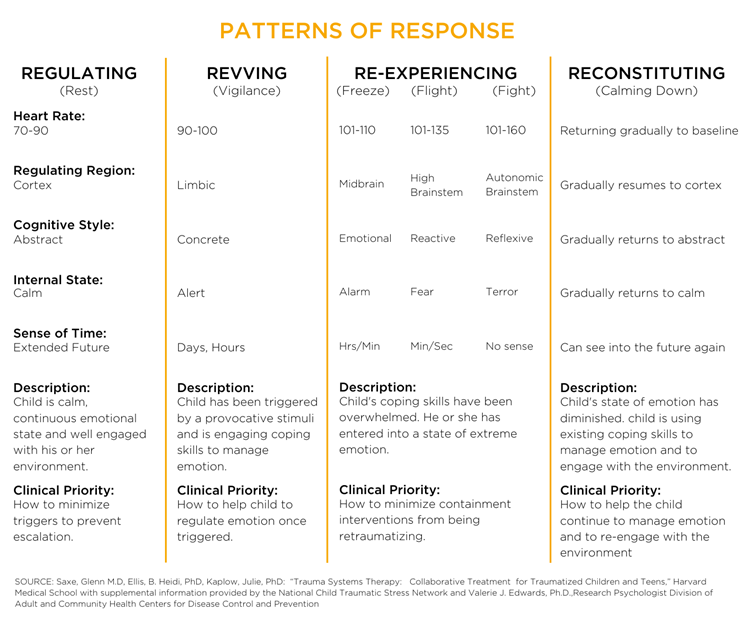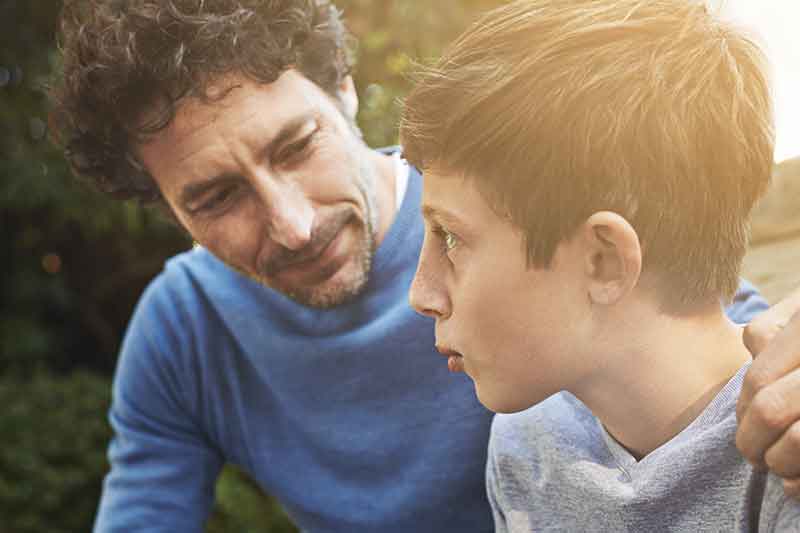By Beth Harmon (training specialist) & Denise Gibson, MA (director of resource family development - Kansas)
Have you ever been so embarrassed, scared, or angry by a situation that you just wanted to “disappear” or “fly away”? Our brains are wired for survival. When we experience strong emotions, our brain sends the signals to get through with the situation by “freezing”, “flying (running away)” and/or “fighting”.
For example, imagine you are on a ZOOM meeting and your young child runs through the room shouting about their successful toileting experience. Making matters worse, they didn’t bother to put on their pants. Your first response might be to freeze. You don’t know how to respond and you search your memory for a way to defuse the situation, but your memory may not have a solution. Next, you fly. You make an excuse and turn the camera off, mute the sound and tend to your child. After managing the situation, you self-calm and return to the ZOOM meeting.
That is a light-hearted example of the flight response.
Now imagine being a child. You are in foster care. All news has to potential to be labeled as threatening. Many of the youth we serve have faced adversity their entire life and their freeze, fly/flight and fight responses have over-developed. Even the smallest bump in the road becomes a “huge” obstacle, an obstacle they don’t have the skills to manage. Helping children and teens manage obstacles takes patience, timing and skill. Remember, you are also moving through an emotional roller coaster when these situations occur.
The chart below explains the four stages we experience when trauma is introduced or triggered. Take note of how the heart rate increases and the sense of time is impacted during each stage.

It's important to remember that as a child is progressing through the emotional rollercoaster, you as a parent or caregiver have the opportunity to help them get back to the “regulating” stage. During the regulating state, you can talk about what has occurred and ways to support them when encountering those bumps in the future.
Here are some possible interventions to use when someone is experiencing freeze, fly/flight and fight:
- Give them time to process the information. Talking to them when they are frozen can escalate them to the flight stage.
- Allow them to leave the situation. Create a safe place where they can “fly” to, such as their room, a common living space, or a designated area outside.
- Should the youth opt to leave the premises gently ask, “What happened the last time you ran away?” Sometimes this can trigger cognition and the youth can slow down and use reason.
Remember, your response will either de-escalate or escalate the situation, leading to possible power struggles between you and the child. You may find yourself experiencing these same stages while the child is on a roller coaster. Creating a safe space for youth to learn to manage their emotions is key to teaching new coping skills. It will also give you a chance to remain calm so you can help them become more resilient as adults.
For more information and resources on parenting children who have experienced trauma, please visit https://www.nctsn.org/



